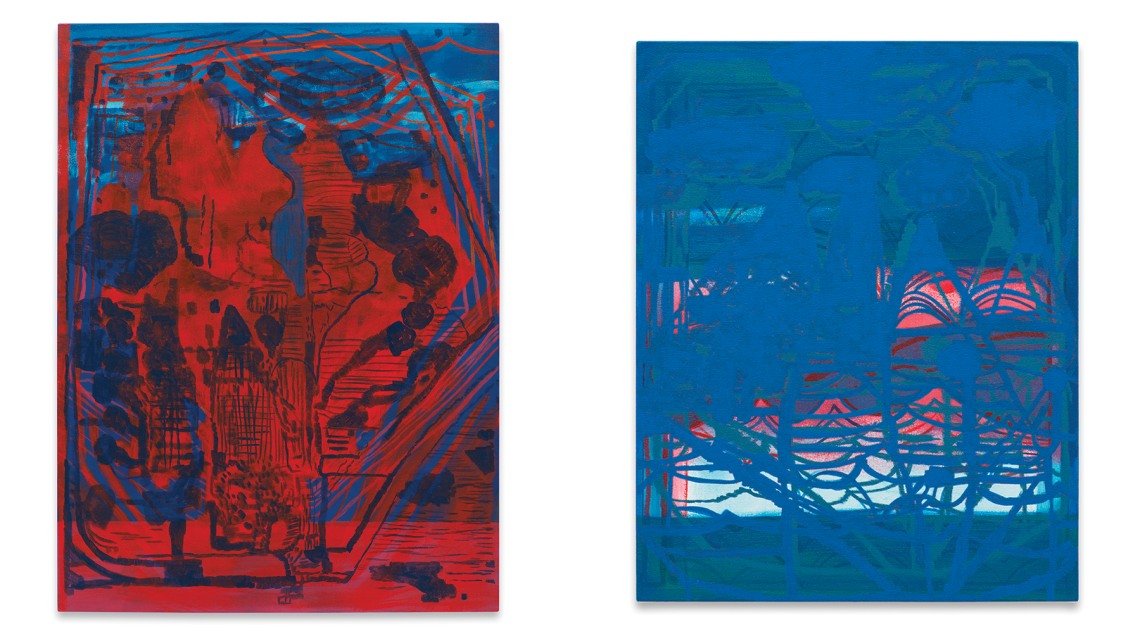
Red Bird Spirits (2023), acrylic on canvas, 40" x 30" (left) and Sky Rock Sea (2023), acrylic on canvas, 20" x 16" (right).
News directly from Cornell's colleges and centers
An energy all their own: inside the paintings and practice of EJ Hauser
By Molly Sheridan
There's a pixelated energy coming off EJ Hauser's recent paintings through both shapes and color, yet also aspects of medieval marginalia of a sort that have been invited inside the confines of the canvases. Lions peer out at the viewer or birds perch in neat rows, trees and mountains vibrate. In conversation, Hauser is quick to underline the value they place on exploring the natural world through their work, as well as the necessity of holding on to wonder and a sense of play no matter how much experience they accrue.
From questions about content and process to insights into career paths, they have been offering encouragement and sharing their professional perspective with M.F.A. candidates in the Department of Art as the Fall 2023 Teiger Mentor and will discuss these topics with the broader AAP community during an artist talk on Thursday, November 30, at 5:15 p.m. in the Abby and Howard Milstein Auditorium. In preparation, Hauser offered some lessons learned through a life dedicated to painting.
Would you share a bit about what has shaped your visual language? How has that developed?
The title of my upcoming lecture is "Mission to Explore," and I came up with it after a conversation with an artist and seeing a Jacques Cousteau documentary. As a child, I thought Cousteau was interesting because he had this appetite for going into the natural world and trying to explicate the wonder he found. I thought about how this is an artist's mission that is informed in childhood. Since children don't have much experience, they can give themselves over totally to a world full of mystery, a world full of magic even. I want to feel this way about the world, that there is something that we can't explain with words, something that's a third thing. I think about poetry a lot. Poetry is made up of words, but it's also about sensations and concepts, it's a kind of abstraction. One of the things I love about art is that it doesn't stay the same. A painting doesn't move — the brush marks all stay in the same place — but you are always different when you're looking at a painting, and so you become this interesting element in the story of what the painting means and how it's apprehended.
It's important for artists to keep this suspension of what's real in order to give themselves over to the fantasy they are trying to portray. For me, it's an exuberance about the natural world and how amazing that is, or creatures or words. I'm always combining those things in my work. This mission to explore is something that I also try to encourage my kids, my students, to take on — the ability to have the make-believe be important. Making a painting is playing, sort of. It's taking materials and trying to find out what they can be besides just paint in a tube.
Continue reading on the Architecture, Art, and Planning website.
Media Contact
Get Cornell news delivered right to your inbox.
Subscribe
